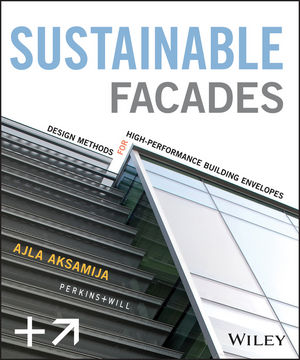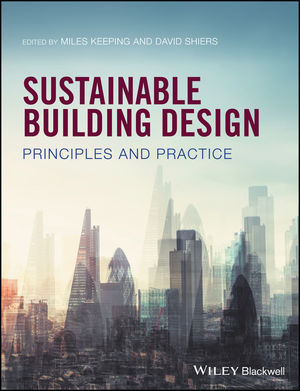After growing almost exponentially in recent years, attendance at the Greenbuild International Conference & Expo, held November 11 to 13 in Phoenix, hovered around 28,000, roughly equivalent to the size of the 2008 conference in Boston. In addition to a star-studded opening ceremony, headlined by Al Gore and Sheryl Crow, the convention featured a long list of educational sessions, field trips, and press conferences. Topics ran the gamut, from building performance to job growth. Here are a few highlights from Greenbuild 2009.

Greenbuild 2009, held in the Phoenix Convention Center, drew about 28,000 attendees. Topics of discussion during the three-day event included building performance and job growth in the green sector
Generating Jobs
The 52-page “Green Jobs Study,” produced by the USGBC and the consulting firm Booz Allen Hamilton (BAH), was released during the convention—and it offers some impressive numbers. About $554 billion will be spent between 2009 and 2013 on construction of buildings that have multiple sustainable features or are LEED-certified. It will take 7.9 million jobs to create these buildings, according to the report.
“The study demonstrates that investing in green buildings contributes significantly to our nation’s wealth while creating jobs in a range of occupations, from carpenters to cost estimators,” claims Gary Rahl, senior vice president of BAH. The report can be downloaded at www.usgbc.org/greeneconomy.
From 2000 to 2008, development of “green” buildings contributed $178 billion to the economy and accounted for 2.4 million U.S. jobs, says the report. The study defines “green buildings” as those built to LEED or equivalent standards or those that incorporate numerous green-building elements across multiple categories, such as energy, water and resource efficiency, responsible site management and improved indoor air quality. A project with just a few features, such as waterless urinals, would not be included.
Assessing Green Products
The nonprofit Healthy Building Network, founded in 2000, launched its online materials evaluation tool, called Pharos. In development for more than three years, the tool is intended to help designers and others compare the health and environmental effects of various materials during the manufacturing process and in use.
So far, the database includes 100 products in three categories: resilient flooring, particleboard and wheat board, and batt insulation. Summaries of the products contain lists of their contents linked to a chemical library.
Unlike other product-evaluation systems, manufacturers do not pay to be listed. Instead, the project is funded by grants from philanthropic foundations and by users’ $75 annual subscriptions.
Creating Standards
On November 2, just days before Greenbuild began, the document likely to become the nation’s first standard for high-performance buildings moved a step closer to adoption with the end of the fourth round of public comment.
“Standard 189: Standard for the Design of High-Performance, Green Buildings Except Low-Rise Residential Buildings” is slated for mid-February publication, although it has a few more hurdles to clear, including a vote by the development committee members followed by approval from the boards of each of the collaborating organizations.
The standards-writing effort is a collaboration of the American Society of Heating, Refrigerating and Air-Conditioning Engineers, USGBC and the Illuminating Engineering Society. “I feel we are close to publication,” said Kent Peterson during a press event at Greenbuild. Peterson is chair of the standard’s development committee and principal of P2S Engineering in California.
Standard 189 defines the minimum requirements for a green building. It addresses energy efficiency, a building’s impact on the atmosphere, sustainable sites, water efficiency, materials and resources, and indoor environmental quality. The document is written in “normative,” or code-enforceable language, so that municipalities and states can incorporate the criteria into building codes and use them as the basis for awarding tax credits, rebates or other incentives.
While the final energy modeling for the fourth public review will not be completed and reported by the U.S. Department of Energy until January, Peterson anticipates the current draft will help cut energy use over the current ASHRAE Standard 90.1-2004 by 27 percent to 30 percent and Standard 90.1-2007 by 22 percent to 24 percent. The potential savings, said Peterson, are based on weighted average across building stock and climate zones.
Analyzing Performance Data
During a summit attended by roughly 100 people, USGBC staff and LEED committee members gave an update on the “Building Performance Initiative,” which they hope will help close the gap between buildings’ predicted and actual energy and water use.
Key to the effort is a still-evolving plan to gather and analyze performance data from LEED-certified buildings. Projects seeking certification under the latest version of the rating system, launched in April, must comply with a somewhat controversial “minimum program requirement,” which mandates reporting of post-occupancy energy and water use. But some 4,000 certified projects and another 24,000 in the certification pipeline are not subject to this condition.
Joel Ann Todd, chair of USGBC’s LEED steering committee, asked the audience what the council could do to encourage project teams to volunteer the performance information. The suggestions included rewarding participating projects with bonus LEED points, waiving some portion of the certification fee, or providing “coaching” to help owners of underperforming buildings reach the original design goals.
A number of attendees made the case for standard tracking and reporting formats. Said one attendee: “The metrics and the rules need to be bulletproof.”






